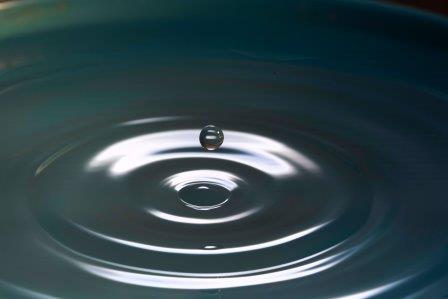We all get complacent at times about safety in the homes, mainly about the small things which can still have big outcomes. Let’s make 2018 the year we take stock of what we have in place and what safety areas we can improve on. Removing just a few hazards can make a huge difference to keep our homes safe.
Below you will find some tips and ideas on how to prevent the three most common types of injuries caused by hazards in the home.
Burns
Do you know what temperature your hot water cylinder is set at? 60-65 degrees is a good. Too much hotter than this and it poses a hazard in regards to burns. Any lower than 60 and you run the risk of growing Legionella Bacteria (you don’t want to know what that is!). Keep in mind that the water temperature that is shown on the cylinder is not what is going to come out of the tap. It’s going to drop a degree or three while in transit to the sink you’re using it at.
Since more than half of household burn and scald injuries occur in the bath, you might want to set your water temperature to be in line with what comes out of this particular tap. 60 degrees at the cylinder might mean 57 degrees at the bath, or higher if your hot water cylinder is close to the bathroom.
If you have small children in the home who are able to work the taps, you might want to consider putting some anti scald devices in place. Alternatively you can add a child door knob cover for the bathroom. They just slip over round door knobs and have to be squeezed in certain places while turning to open. They only cost a few dollars from your local Bunnings or Mitre10. Have a look at the link for some options to consider.
Here are some additional tips to prevent burns and scalds in the home:
- Never leave anything that contains hot liquid or food where a child can reach it.
- Turn all pot handles toward the back of the stove while cooking.
- Unplug all heated appliances when not using them. These include steam irons, space heaters and curling irons.
- Extinguish candles before leaving a room, the home or before going to sleep.
- Add cold water to the bath first if you don’t have a mixer.
- Smoke alarms and fire extinguishers save lives.

Poisoning
The leading cause of poisoning in the home is due to unsafe storage of medications
The National Poisons Centre has a 24 hour toll free number 0800 764 766. You can call for help or information if you think a family member has been exposed or in danger. It’s better to be safe than sorry so call if you have any concerns or any of the following:
- accidentally swallowed any medicine, household, agricultural or industrial chemicals, or plants, berries or mushrooms
- accidentally taken too much of a medicine (overdose).
- breathed in toxic or chemical fumes
- had skin or eyes splashed with toxic products or chemicals
- taken recreational drugs, herbal highs or chemical substances in any way or form, with or without symptoms.

Reduce the risk of poisoning in the home by:
- Placing the National Poisons Centre number next to the telephone to use in emergencies or save in your cell phone (0800 764 766).
- Keeping all medications out of the reach of children.
- Storing toxic household products where children and pets can’t reach them.
- Understanding that the fumes of certain household products may be lethal if combined (such as bleach and ammonia).
- Not storing toxic materials in food containers or drink bottles.
- Watching your child even more closely when you are away from home, especially at a grandparent’s home where medicines are often left within a child’s reach.
For more information about poisoning please see the link.
Falls
Falls are the most common accidents that occur in the home and can cause serious injury or death. The risk increases when it comes to the very young and the elderly and many times they are easily preventable.
Reduce the risk of falls with these tips:
- Use anti-slip trips on stairs
- Install non-slip mats in the bathtub and shower
- Elderly should consider hand rails in the bathroom for bathing and showering.
- Protect young children from falls by using safety gates to keep them away from the stairs.
- Tape or tack throw rugs to the floor.
- Examine each room in the home for potential fall hazard. Look for floorboards that stick up, cords that may present a tripping hazard and loose stairway handrails.
- Increase lighting in dark areas and place nightlights in hallways, bedrooms, bathrooms and on stairways.
- Wipe up spills on slippery surfaces immediately.
I hope with a few simple changes you too can make you home safer for everyone.
Powered by WPeMatico

Brent Palmer – Professional Real Estate Consultant
About the Author: The above article on 3 home safety hazards and how to prevent them was written and provided by Brent Palmer, a local leader in the field of Richmond and Nelson Real Estate sales, marketing, advanced technology for home selling, and social media. You can contact Brent Palmer here, or at 027 544 9921.
He has helped many people buy and sell homes in the Nelson, Stoke and Richmond areas for years, and would love the opportunity to help you as well.
Thinking of selling your home? I have a real passion for helping people sell their homes in our Nelson and Tasman Region, as well as the marketing, social media & advanced technology for home selling that goes along with it. I’d love to have the opportunity to sit down with you discuss how we can work together to get you the best price.
I help people buy and sell real estate in the following Nelson and Tasman towns & neighbourhoods: Wakefield, Brightwater, Hope, Appleby, Redwood Valley, Mapua, Stoke, Tahunanui, Atawhai and of course, Richmond and Nelson City. Connect with Brent on Facebook and pretty much everywhere else.
Know someone who needs help with real estate? Be rewarded and REFER them here



